El museo Art Ludique en Paris está presentando una exhibición sobre el arte del videojuego: La Inspiración Francesa, desde el 25 de septiembre de 2015 hasta hasta el 6 de marzo.
La muestra se enfoca en el proceso de creación y los artistas principales que trabajan en la industria francesa del videjuego. Más de 800 piezas de arte e instalaciones, desde impresiones digitales, acuarelas, bocetos a lápiz, esculturas en barro, impresión 3D, proyecciones en 180 grados, storyboards, cuadernos de notas, clips de entrevistas a los artistas, animación de sprites, de assets y cinemáticos.
Sala 1
El taller del artista, comparando al artista de videojuego al artista renacentista: de cómo realiza bocetos iniciales para crear una ilustración, escultura, edificio o invento. Según Art Ludique (y yo, porque estoy de acuerdo por completo) el videojuego es la forma suprema de arte, porque abarca todas las demas formas de arte para luego trascender la interactividad. En cierta forma, un videojuego es participar de una instalación, en la que uno dirige la obra a su gusto y obviamente, destreza. Esta muestra es dirigida tanto al conocedor como el entusiasta, el gamer, el padre del gamer y el artista. Por lo tanto, no me sorprende ver nuevamente, en una exhibición con arte digital, la frase: “la computadora es una herramienta más para el artista”, justo al lado de una demostración en Zbrush del escultor Pascal Duriaux, del goblin Maurice, del corto: de The Dark Sorcerer, la cual se proyectaba junto a una impresión 3D del modelo.

The Dark Sorcerer es un corto animado de demostración de la capacidad del PS4 de manejar gráficos en tiempo real.
Además del arte digital, lo curioso de esta sala, es que junto a estas presentaciones de alta tecnología, hay bocetos a lápiz, marcadores, plumillas y acuarelas de conceptos de juegos hechas en cuadernos. Entre estos bocetos, estaban los dibujos originales y los más recientes de Rayman, Dishonored y For Honor .
El artista de videojuegos trabaja con las más avanzadas y las más básicas herramientas y muchas veces, también las inventa. Además de artista, es ingeniero, historiador y escritor de experiencias interactivas.
Sala 2
exteriores, interiores, arquitectura y paisajismo. Cómo transforman un Paris actual a uno del año 2084, distópico como el que de Remember Me?. Cómo se estudian las fuerzas de la naturaleza para crear un mismo espacio, afectado por la lluvia, la nieve, el día y la noche. En esta sala también tienen los conceptos de juegos como The Division, el trabajo de Benoit Sokal para Syberia 2 y Paradise, los espacios de For Honor y Assasin’s Creed 3.
Sala 3
Cómo se viaja al pasado, cuando no existían cámaras para capturar lo que ya no existe? Cómo se viaja a otros planetas si nunca hemos ido? Cómo te haces amigo de un personaje de una cultura/idioma que no conoces? Esta sala nos lleva de la mano por estas preguntas, respondiéndolas con imágenes que son mitad estudios de lugares reales y mitad licencia artística. Para un juego como Assasin’s Creed IV: Black Flag, los artistas tuvieron que viajar al los lugares donde ocurren los eventos del juego, tomaron de la arquitectura antigua y el paisaje del caribe para visualizar el ambiente del juego.
En esta sala también está el trabajo de Christophe Messier en los paisajes de Wild, un juego que toma lugar en la prehistoria. Este artista es un ejemplo que lo versátil que un artista puede (y debe) llegar a ser en el vasto mundo de los videjuegos.
Sala 4
En esta sala se rinde tributo al videojuego de la ficción histórica, donde el artista carga con el reto de introducir al jugador en eras en la que hay escritos de los ganadores, los perdedores, los afectados y los espectadores del evento. Eventos como La Revolución Francesa, la Primera y Segunda Guerra Mundial. Habla de cómo es el reto de crear algo que ya existió y del cual existen documentos e imágenes sobre el evento. Por un lado está la re-creación del lugar literal: En esta sala se encuentra una videoinstalación de las calles de Paris durante la revolución francesa, tras los ojos del equipo de arte de Assasin’s Creed Unity. Una caminata que nos lleva por el icónico Pont Neuf y atraviesa calles plagadas de gente que no quería comer brioche, siendo movilizada por caudillos y poetas, para terminar en el interior de la catedral de Notre Dame. En una proyección de 5 cámaras sincronizadas, lograron poner en una pantalla de 180 grados un corto viaje por el tiempo, a punta de libros de historia e imaginación.
Del otro, está la interpretación de los sentimientos que generó el evento histórico, por medio de eventos en la narrativa del juego, como en Valiant Hearts: The Great War. Es un juego para tablet, que te lleva por el punto de vista de personajes que participaron en la Primera Guerra Mundial, basándose en las cartas que escribieron. La inmersión, en este caso, más que audiovisual, es más como leer un libro, pero tú generando los eventos de la historia. Los personajes tienen un diseño más hacia el cartoon, trabajados con una estética muy particular, con una paleta de colores muy bien pensada.
Sala 5
Diseño de personajes. Esta puede ser la sala más extensa y de la que reconocí más nombres de artistas, varios de los mismos admiro y sigo su trabajo de cerca. Nombres como Jean-Baptiste Monge, quien tiene una pared entera dedicada a él, con bocetos de goblins, dragones bebé, trolls y Dryads del juego Faery: Legends of Avalon.
La pared opuesta tiene a Benoit Sokal, con imágenes del juego Paradise. Entre ellos, habían imágenes de un juego que nunca se realizó, un proyecto basado en el mundo de los Raving Rabbids, en el que los Rabbids toman un giro grotesco visual y temáticamente.
En esta sala también aparecen los personajes estilizados de Dofus, un MMORPG que también tiene su serie de televisión y recientemente, su película, y el colorido mundo de Rayman Legends, el cual, si bien es un platformer, es cualquier cosa menos bidimensional. Dentro de esta sala, también están los retratos de algunos de los personajes de Dishonored 2, junto a bustos hechos en barro de los mismos, hechos por Lucie Minne.
El cuarto de retratos muestra el objetivo de la dirección artistica, en la que simultáneamente a los bocetos, se creaban los bustos en barro, para poder siempre corroborar cómo se comportan las superficies con la luz, solo tienes que llevar el busto en barro, real, del exterior a un cuarto, a otro cuarto.
Sala 6
La influencia del cine en el videojuego. La narrativa visual, la planificación en forma de storyboards, el dialogo entre personajes, la puesta en escena, iluminación, música, cinematografía, la división de la historia en actos, escenas y beats, y no solo incorporados a los cinematics cuando un nivel termina, también incorporando el cine a la dinámica del juego y sus eventos en tiempo real. La otra parte de esta sala está dedicada a la tendencia de algunos juegos de tomar actores reales y traerlos al videojuego no solo en apariencia, pero en su forma de actuar, usando como ejemplo el juego: Beyond Two Souls, con la actuación de Ellen Page y Willem Dafoe, lo cual, si bien no es una idea nueva, la diferencia en realismo, es notable. La sala presenta preguntas es el futuro de videojuegos y del cine. Veremos más caras conocidas por el cine en los videojuegos? O veremos nuevas caras en el cine gracias a los videojuegos?
Sala 7
Videojuegos basados en la fantasía, las fábulas, leyendas, cuentos de hadas y poemas. Para la creación de estos lugares mágicos, los artistas deben generar elementos gráficos, a veces trabajados de cero, a veces inspirados, a veces haciéndole homenaje a iconografía ya existente, como el art nouveau en Child of Light, el arte de Miyazaki en Abraca y la ilustración de libros de cuentos para niños. También aprovechan medios como la acuarela y los lápices de colores para lograr mundos de los sueños como en juegos más experimentales como Child of Eden. Tal vez fue mi sala favorita, o mi menos favorita, porque es la última y eso significa el fin de esta hermosa, instructiva e inspiradora visita.
Francia es una potencia en el mercado de videojuegos, y ver su eclecticismo en su arte, su investigación para los temas históricos y el realismo e ingenio para crear mundos nuevos, me vuelve optimista por el futuro de los videojuegos y el arte. Para mi lo importante ahora es conocer sobre estos artistas y seguir sus pasos en este medio artístico tan enriquecedor, inclusivo y vasto. Esta muestra está en el museo Art Ludique en Paris hasta el 6 de marzo.
/
Art Ludique, the Museum in Paris is presenting an exhibition on The Art of videogames: The French Inspiration, from September 25, 2015 to March 6.
The exhibit focuses on the process of creation and major artists of the French videogame industry. More than 800 pieces of art and installations, from digital prints, watercolors, pencil sketches, clay sculptures, 3D printing, 180 degree projections, storyboards, notebooks, clips of interviews with artists, animation sprites, assets and cinematics.
Room 1
The artist’s workshop, comparing the videogame artist to the artist of the Renaissance: how to perform initial sketches to create an illustration, sculpture, building or invention. According to Art Ludique (and me, because I agree completely) a videogame is the highest form of art, because it covers all other forms of art and then transcend interactivity. In a way, a videogame is to participate of an installation, in which you direct the piece to your taste and obviously, your dexterity. This exhibition is aimed at both the knowledgeable and enthusiast, the gamer, the father of the gamer and artist. Therefore, I am not surprised to see again in a display with digital art, the phrase “computer is just a tool for the artist”, right next to a demonstration in ZBrush sculptor Pascal Duriaux, of the goblin Maurice, the short: The Dark Sorcerer, which is projected next to a 3D print of the model. In addition to the digital art, the curious thing about this room is that with these high-tech presentations, there are pencil sketches, markers, pens and watercolors of concepts of games made in notebooks.
Among these sketches were the original and the latest drawings of Rayman, Dishonored and For Honor. The videogame artist works with the most advanced and the most basic tools, and often times, he also invents them. Additionally to being an artist, he is an engineer, historian and writer of interactive experiences.
Room 2
Exteriors, interiors, architecture and landscape. How to transform a current Paris to one of the year 2084, dystopian as that of Remember Me? How do the forces of nature are studied to create the same space, affected by the rain, snow, day and night. In this room concepts also have games like The Division, Benoit Sokal‘s work for Syberia 2 and Paradise, the set designs of For Honor and Assassin’s Creed 3 among many others.
Room 3
How do you travel to the past, when there were no cameras to capture what no longer exists? How do you travel to other planets if we have never gone? How you befriend a character of a culture or language you do not know? This room takes us by the hand through these questions, answering them (and creating more) with images that are half studies of actual places and half artistic license. For a game like Assassin’s Creed IV: Black Flag, artists had to travel to places where game events occured, taken from the ancient architecture and landscape of the Caribbean to display the game environment. See if you recognize one of his sources of inspiration. In this room it is also the work of Christophe Messier in the landscapes of Wild, a game that takes place in prehistoric times. Este artista también trabajó en el arte de Rayman Legends, an example of the versatility that an artist can (and sometimes must) have in the vast world of videogames.
Room 4
This room is a tribute to the historical fiction game, where the artist, carroes the challenge of introducing the player into eras in which there are writings of the winners, the losers, those affected and spectators of the event. Events like the French Revolution, World War I and II. It talks about the challenge of creating, something that already existed, using documents and pictures about the event. On one side is the re-creation of the literal place. In this room is a video installation in the streets of Paris during the French Revolution, behind the eyes of the art team of Assassin’s Creed Unity. It takes us for a walk through the iconic Pont Neuf and through streets full of people who would not eat brioche, being mobilized by leaders and poets, to finish inside the Cathedral of Notre Dame. In a projection of 5 synchronized cameras, they managed to put in a 180-degree screen a short journey through time by the power of only history books and imagination. On the other side, there is the interpretation of the feelings generated by the historic event, through events in the narrative of the game, as shown in Valiant Hearts: The Great War.
A game that takes you through the point of view of characters who participated in the First World War, based on their letters. The immersion in this case, rather than audiovisual, is more like reading a book, but you’re the one creating the events in the story. The characters have cartoony design, worked out with a very particular aesthetic, and a very well thought out color palette.
Room 5
Character design. This may be the most extensive room and it was where I recognized more names of artists, several of them I admire and follow their work closely. Names like Jean-Baptiste Monge, who has a whole wall dedicated to him, with sketches of goblins, baby dragons, trolls and Dryads for Faery: Legends of Avalon. The opposite wall has to Benoit Sokal, with images of the game Paradise.
Among them, they had images of a prototype game based the world Raving Rabbids that was never a game, in which the Rabbids take a grotesque turn visually and thematically. In this room stylized characters Dofus, a MMORPG which also has its television series, and more recently, a movie, and the colorful world of Rayman Legends, which although is a platformer, it’s anything but two-dimensional. In this room, are the portraits of some of the characters in Dishonored 2, with busts made of clay, made by Lucie Minne.
The room shows the purpose of artistic direction, which decided to simultaneously do the busts in clay and illustrated, to always be able to check how surfaces behave with light, you just have to take the bust in real clay, from the outdors into a room to another room with different lighting.
Room 6
The influence of film in the game. The visual narrative, planning in the form of storyboards, dialogue between characters, staging, lighting, music, cinematography, the division of the story into acts, scenes and beats, and not only incorporating these things into the cinematics when a level ends, but also incorporating cinema to the dynamics of the game and its events in real time. The other part of this room is dedicated to the trend to take real actors and bring them to the game not only in appearance but in their gestures and performance, using as an example the game: Beyond Two Souls, starring Ellen Page and Willem Dafoe, which, while not a new idea, the difference in realism, is remarkable. The room presents questions about the future of video games and movies. We will see more familiar faces in cinema in video games? Or see new faces in the film thanks to video games?
Room 7
Video games based on fantasy, fables, legends, fairy tales and poems. To create these magical places, artists must generate graphic elements, sometimes worked from scratch, sometimes inspired, sometimes making homage to pre-existent iconography, such as art nouveau in Child of Light, the art of Miyazaki in Abraca and illustration of storybooks for children.
They also make the most media such as watercolor and colored pencils to achieve worlds of dreams like more experimental games like Child of Eden. Maybe it was my favorite room, or the least favorite, because it is the last and that means the end of this beautiful, instructive and inspiring visit.
France is a powerhouse in the videogame market, and seeing its eclecticism in its art, its research for historical subjects, using realism and ingenuity to create new worlds, makes me optimistic about the future of video games and of art. For me the important thing now is to get to know about these artists and follow their footsteps in this artistic medium so enriching, inclusive and vast. This exhibit is in the Ludique Art Museum in Paris until 6 March.
Tags: animacion, animation, art, arte, artwork, digital sculpture, diseño, France, game design, illustration, museum, Paris, sketches, videogame, videojuego

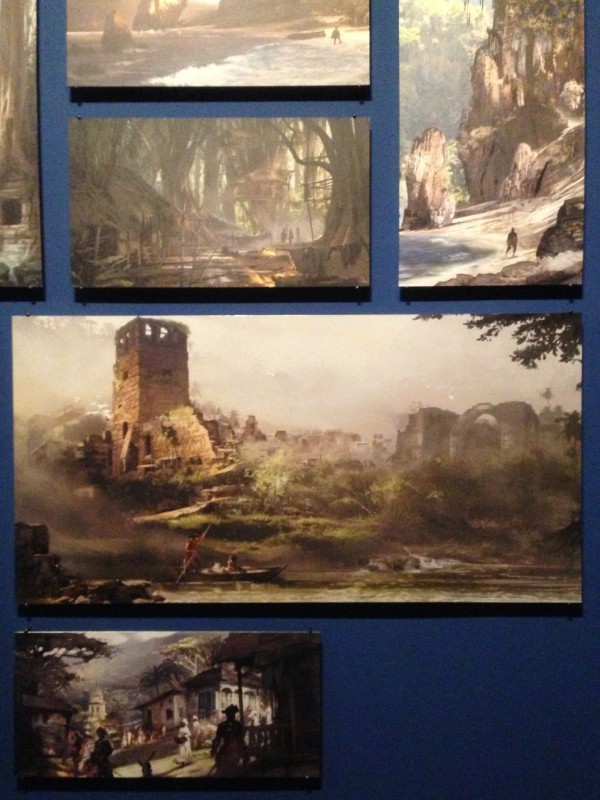


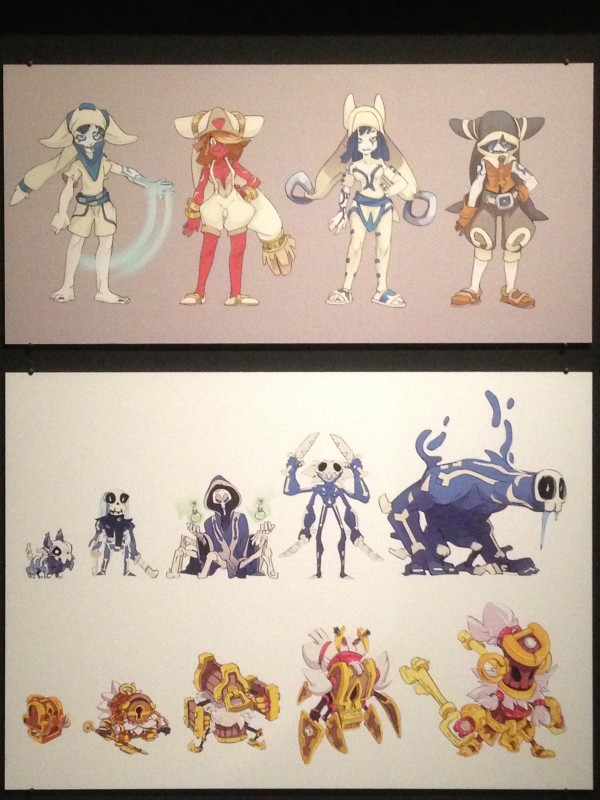
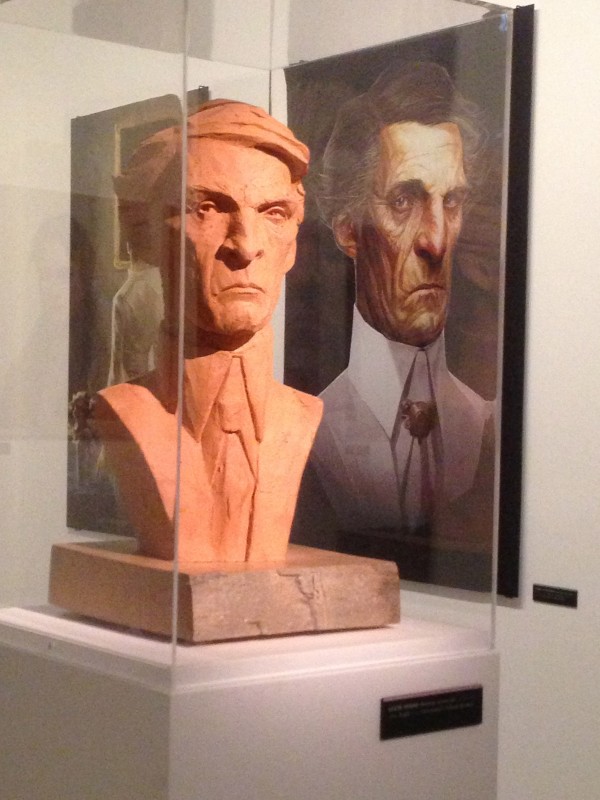


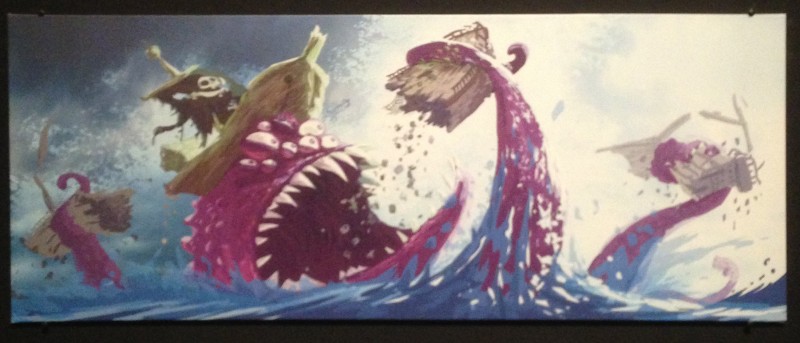
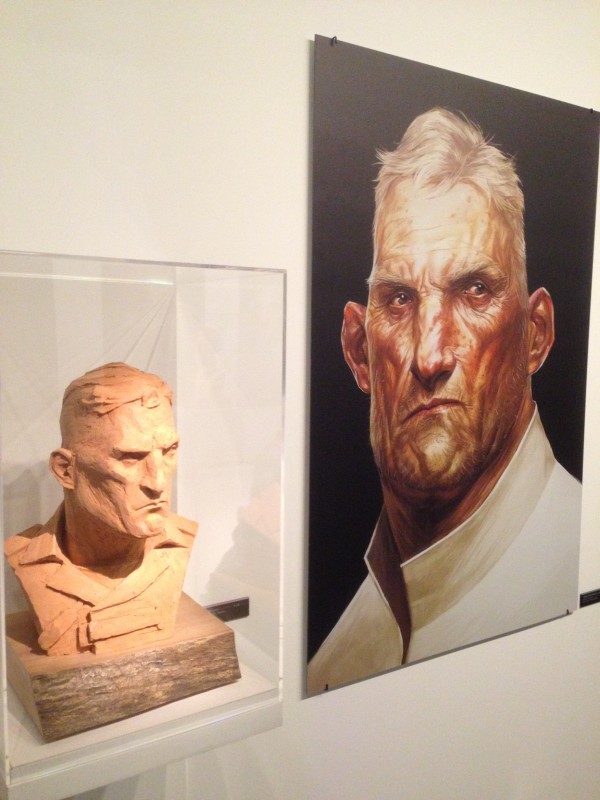


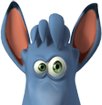

Comment